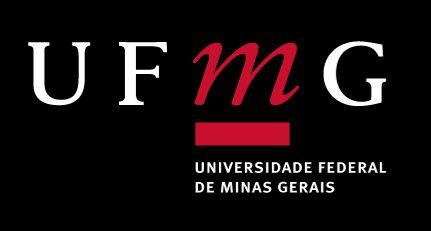Spatial Crime Analysis:
The Distribution of Robbery Cases in Juiz de Fora - MG between the years 2012 and 2022.
Keywords:
Robbery, Geographic Information Systems, Spatial Criminology, Criminal GeographyAbstract
This study aims to analyze the distribution of robbery cases in Juiz de Fora - MG, with the goal of comprehending the evolution of occurrence patterns within the city, considering that criminal activity does not exhibit random spatial manifestation. Employing the Geographic Information Systems (GIS) methodology for criminal analysis, the study sought to map and integrate data sourced from the police report/ incident report spanning the period from 2012 to 2022, utilizing geoprocessing techniques. The findings reveal a notable surge between 2012 and 2016, followed by a significant decline thereafter. The decrease recorded between 2020 and 2022 is believed to be indirectly influenced by reduced human mobility during the COVID-19 pandemic. Furthermore, there is a distinct rise in peripheral area cases, contrasting with those in the city center. In conclusion, the study indicates a discernible alteration in the spatial robbery pattern in Juiz de Fora over the analyzed period, underscoring the necessity for further in-depth inquiry into whether these incidents have been substituted by analogous crimes.
Downloads
References
BATELLA, W. Contribuições da Geografia aos estudos sobre criminalidade. Geografia (Rio Claro. Impresso), v. 35, p. 525-537, 2010.
BATELLA, W. Perspectivas geográficas do contexto teórico da criminalidade violenta e seus condicionantes espaciais. In: Carla Ferreira de Paula Gebara; Iracema Abranches; Luciana Xavier Senra; Lelio Moura Lourenço. (Org.). Processos psicossociais e interdisciplinares em saúde. 1ed.São Paulo: Editora Dialética, p. 193-226, 2023.
BATELLA, W. DINIZ, A.M.A. Análise espacial dos condicionantes da criminalidade violenta no estado de Minas Gerais. Sociedade & Natureza (UFU. Impresso), v. 22, p. 151-163, 2010.
BRASIL. DECRETO-LEI Nº 2.848 DE 07 DE DEZEMBRO DE 1940. Institui o Código Penal. Diário Oficial da República Federativa do Brasil. Rio de Janeiro. 1940.
BRASIL. LEI Nº 12.527 DE 18 DE NOVEMBRO DE 2011. Regula o acesso a informações e dá outras providências. Diário Oficial da República Federativa do Brasil. Brasília. 2011.
BRASIL. LEI Nº 13.709, DE 14 DE AGOSTO DE 2018. Lei Geral de Proteção de Dados Pessoais (LGPD). Diário Oficial da República Federativa do Brasil. Brasília. 2011.
CHAINEY, S. Understanding crime: Analyzing the geography of crime. Esri Press, 2021.
GOMES, B; JONES, J.P. Research Methods in Geography. 1. ed. Oxford: Wiley-Blackwell, 2010.
GUIMARÃES, C. A. G.; BRANCO, T. C.; SANTORO, A. E. Segurança pública e cidades: perspectivas a partir da Escola de Chicago. Revista de Direito da Cidade, v. 13, n. 3, p. 1177-1219, 2021.
GUMP: GUMP#01 - O SERIAL KILLER MARANHENSE FRANCISCO DAS CHAGAS. Entrevistados: Eduardo Júnior e Wilton Rego. Entrevistador: Vinícius Pereira. [S.l]. GUMP. 16 jul. 2022. Podcast.
INSTITUTO BRASILEIRO DE GEOGRAFIA E ESTATÍSTICA - IBGE. IBGE CIDADES. 2023.
INSTITUTO BRASILEIRO DE GEOGRAFIA E ESTATÍSTICA - IBGE. Regiões de Influência das Cidades – Regic 2018. Rio de Janeiro: IBGE, 2020.
KUHN, T. Revoluções Científicas. São Paulo: Perspectiva, 1978.
MENDONÇA, F. Clima e Criminalidade: Ensaio analítico da correlação entre temperatura do ar e incidência de criminalidade urbana. Curitiba: Editora da UFPR, 2001.
MURPHY, A. B. Geografía: ¿Por qué importa? Alianza Editorial, 2020.
RATCLIFFE, J. H. The spatial dependency of crime increase dispersion. Security Journal, [s. l.], v. 23, n. 1, p. 18–36, 2010.
SOUZA, M. C. S.; OLIVEIRA, M. S. M. O racismo algorítmico e a caverna de platão: como as novas tecnologias modulam o estigma do criminoso. In: XII 12º CONGRESSO INTERNACIONAL DE CIÊNCIAS CRIMINAIS (CICCRIM) XX Congresso Transdisciplinar de Ciências Criminais do ITEC–RS. 2021, Porto Alegre. Anais eletrônicos [...] Porto Alegre: EDIPUCRS, n.p., 2022.
SECRETARIA DE PLANEJAMENTO E GESTÃO - MINAS GERAIS (SPG-MG). Minas Gerais registra queda de 27,5% em roubos a comércio. 25 de outubro de 2017. Disponível em: https://www.mg.gov.br/planejamento/noticias/defesa-social/10/2017/minas-gerais-registra-queda-de-275-em-roubos-comercio Acesso em 19 de fev. de 2024.
SILVA, B. F. A. Coesão Social, Desordem Percebida e Vitimização em Belo Horizonte. 80 f. Dissertação (Mestrado em Sociologia) - Faculdade de Filosofia e Ciências Humanas, Universidade Federal de Minas Gerais, Belo Horizonte. 2004.
ZAIDAN, R. T. geoprocessamento conceitos e definições. Revista de Geografia-PPGEO-UFJF, v. 7, n. 2, 2017.
TOMLINSON, R. F. The impact of the transition from analogue to digital cartographic representation. American Cartographer, [s. l.], v. 15, n. 3, p. 249–262, 1988. Disponível em: http://dx.doi.org/10.1559/152304088783886937. Acesso em: 7 abr. 2020.
Downloads
Published
How to Cite
Issue
Section
License
Copyright (c) 2024 Francisco Carlos Moreira Gomes, Dr.

This work is licensed under a Creative Commons Attribution 4.0 International License.
Os artigos desta revista obedecem a licença Creative Commons — Attribution 4.0 International — CC BY 4.0









